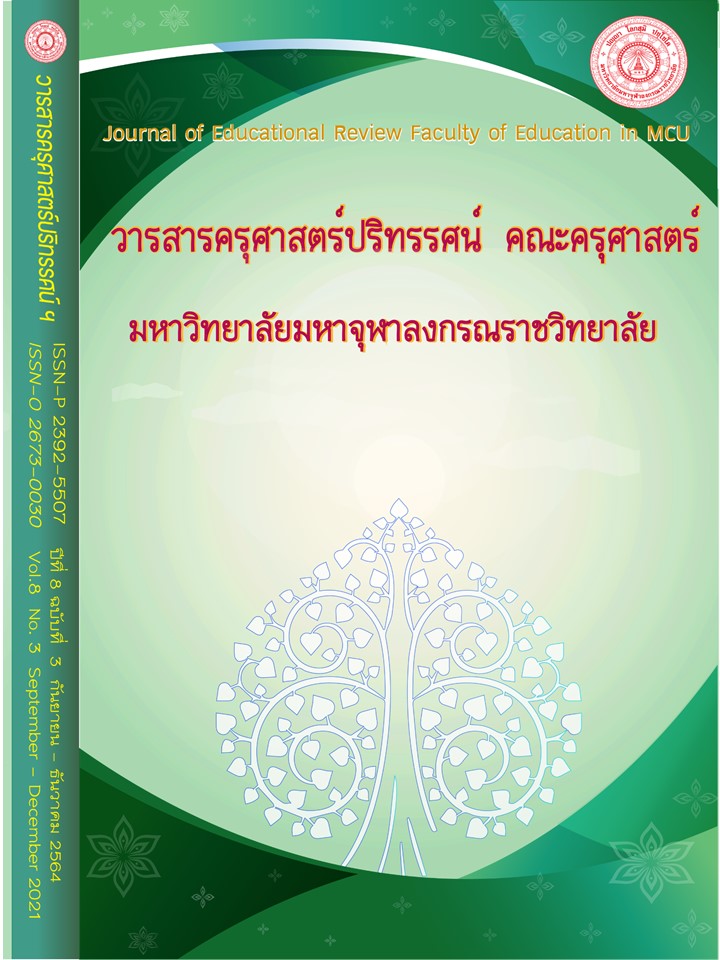A STUDY OF MIGRAINE TREATMENT MODEL WITH THAI TRADITIONAL MEDICINE
Main Article Content
Abstract
This qualitative and action research aimed to determine the migraine treatment model with Thai traditional medicine as a guideline for learning and teaching process. It was undertaken via the methods of related literature reviews and the derivation form of the earned experience treatment of Thai traditional medical (TTM) doctors in the Thai Traditional Medicine Demonstration Hospital. The results revealed that the body of migraine knowledge could be divided into 2 parts: 1) theories and 2) practices. The migraine symptom according to the theoretical knowledge of Thai traditional medicine was one-sided headache and blurred vision which was similar to one of the symptoms of migraine in modern medicine. It was caused by the distorted and jammed wind element in the body, together with other stimulating factors such as sunlight, hot / cold weather. As a result, the wind and blood in the muscles of the back, scapula and shoulder-neck. This affected the wind flows in the blood vessels to the head, causing the patient to have a one-sided headache, throbbing pain and stiff shoulder-neck muscles. The treatment process of Thai traditional medicine was done through Manus therapy with 3 steps: 1) preparing muscles for treatment, 2) pressing the muscles points, and 3) restoring the muscles. This Manus therapy helped relieve the exacerbation of wind and blood penetrating the muscles, veins, and tendons within the back, scapular and shoulder-neck. It made the wind and blood circulation flow normally. Thus, it was productive for learning and teaching process.
Article Details
ทัศนะและความคิดเห็นที่ปรากฏในบทความในวารสารฉบับนี้ถือเป็นความรับผิดชอบของผู้เขียนบทความนั้นเพียงผู้เดียว และไม่ถือเป็นทัศนะและความรับผิดชอบของกองบรรณาธิการ
กองบรรณาธิการขอสงวนสิทธิ์ในการคัดเลือกบทความลงตีพิมพ์และจะแจ้งให้เจ้าของบทความทราบหลังจากผู้ประเมินบทความตรวจอ่านบทความแล้ว
ต้นฉบับที่ได้รับการตีพิมพ์ในวารสารครุศาสตร์ปริทรรศน์ คณะครุศาสตร์ มหาวิทยาลัยมหาจุฬาลงกรณราชวิทยาลัย ถือเป็นกรรมสิทธิ์ของคณะครุศาสตร์ มหาวิทยาลัยมหาจุฬาลงกรณราชวิทยาลัย ห้ามนำข้อความทั้งหมดหรือบางส่วนไปพิมพ์ซ้ำ เว้นเสียแต่ว่าจะได้รับอนุญาตจากมหาวิทยาลัยฯ เป็นลายลักษณ์อักษร
References
กนกอร เพียรสูงเนิน. (2562). การศึกษาเส้นประธานสิบ กรณีศึกษาเส้นกาลทารี. วิทยานิพนธ์การแพทย์แผนไทยมหาบัณฑิต. มหาวิยาลัยราชภัฏเชียงราย.
จิราพร เทาด่านจาก. (2563). โรคไมเกรนในมิติของการแพทย์แผนไทย และการแพทย์แผนปัจจุบัน. รายงานสืบเนื่องการประชุมวิชาการนำเสนอผลงานวิจัย ระดับบัณฑิตศึกษา ครั้งที่ 4. มหาวิยาลัยราชภัฏมหาสารคาม. 249-255.
ปรางทิพย์ ล้อดงบัง, รณิดา เดชะ, วัลยา สุนทรา และคนอื่นๆ. (2559). ผลการให้บริบาลทางเภสัชกรรมตามแนวทางการรักษาผู้ป่วยไมเกรนในร้านยามหาวิทยาลัย: การศึกษานำร่อง. วารสารเภสัชศาสตร์ไทย มหาวิทยาลัยมหาสารคาม. 8. 249-260.
พระราชบัญญัติวิชาชีพการแพทย์แผนไทย พ.ศ. 2556. (2556). ราชกิจจานุเบกษา เล่ม 130 ตอนที่ 10 ก. หน้า 2 (25 มี.ค. 2560).
ภัสราภรณ์ จวบบุญ. (2561). ผลของการนวดต่ออาการปวดศีรษะแบบไมเกรนในผู้ป่วยโรคไมเกรน. งานมหกรรมวิชาการสาธารณสุขของสำนักงานสาธารณสุข จังหวัดมหาสารคาม.
มหาวิทยาลัยราชภัฏเชียงราย วิทยาลัยการแพทย์พื้นบ้านและการแพทย์ทางเลือก. (2562). ตำราการนวดรักษาของวิทยาลัยการแพทย์พื้นบ้านและการแพทย์ทางเลือก. เชียงใหม่: วนิดาการพิมพ์.
รจนา ปุณโณหก, นภาพร เอี่ยมละออ, กุณฑลี จริยาปยุกต์เลิศ และคนอื่นๆ. (2550). ผลของการนวดต่ออาการปวดศีราะแบบไมเกรนและความสุขสบายในผู้ป่วยโรคไมเกรน. วารสารคณะพยาบาลศาสตร์ มหาวิทยาลัยบูรพา. 14(4). 76-89.
สำนักบริหารการสาธารณสุข กระทรวงสาธารณสุข. (2559). แผนพัฒนาระบบบริการสุขภาพ (Service Plan) พ.ศ. 2561-2565. นนทบุรี: โรงพิมพ์ชุมนุมสหกรณ์การเกษตรแห่งประเทศไทย.
สุภารัตน์ สุขโท, อุไรวรรณ ชัชวาลย์, วิชัย อึงพินิจพงศ์ และคนอื่นๆ. (2555). ผลทันทีของการนวดไทยต่อการบรรเทาอาการปวดในการบำบัดกลุ่มอาการปวดศีรษะจากความเครียดแบบเรื้อรังและไมเกรน. วารสารเทคนิคการแพทย์และกายภาพบำบัด. 24(2). 220-234.


